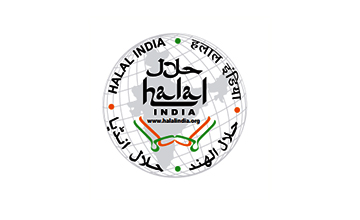KANTHRAZIT™

KANTHRAZIT™: Anthracite filter media certified & in accordance with EN 12909
KANTHRAZIT™ is a natural anthracite filter material produced in India, Russia & Vietnam, globally renowned for quality deposits of Anthracite Coal. Especially favourable geological processes formed anthracite with a particularly special chemical composition & structure. Our unique selection of world’s best quality anthracite control along with proprietary manufacturing process of drying, destoning, cleaning, crushing sieving & dedusting ensures our capability to convert anthracite to premium-quality filter media for single-layer and multi-layer filtration. The offered Anthracite have proven track record & supply references in the biggest of desalination plant & largest of municipal water filters.
For municipalities that make use of anthracite media, these qualities equate to lower operational and capital costs. Using anthracite grants the ability to use sand filters, and the media can be integrated into existing gravity sand filters. Of course, anthracite’s physical properties ensure that a municipalities filter’s need less back washing, experience lower head loss, and see better treatment results. This also means municipalities can spend less on filter maintenance and backwash water versus singular sand filtration systems due to these efficiencies.
Introduction:
Anthracite Filter Media are filtration materials for turbidity and SS removal. Since the specific gravity is lighter than that of Filter Sand, it is much used in combination with Filter Sand in dual-media filtration, to consist reverse grain layers after backwashing. In addition, because of high content carbon of this product, it has high resistance to various chemicals and high physical strength so that it is widely used for city and industrial water purification.
Features of Anthracite Filter Media
1. High void percentage and much removal capacity of turbidity and SS.
In the “Single-medium filtration” treated by Filter Sand only, small particles are placed at upper part of layer, called as “Surface filtration” turbidity and SS are caught at the surface layer part mainly, and it results in less removal capacity of turbidity and SS. By use of Anthracite Filter Media of which the specific gravity is lighter than that of Filter Sand and even bigger particles can be placed on the Filter Sand, it is possible to enlarge the removal capacity of turbidity and SS as an ideal “Dual-media filtration” in combination with Filter Sand and it is widely used in many water works worldwide. Since Anthracite Filter Media, rich angular, and complicated in form, has a high void percentage and large specific area, “Deep bed filtration” which is effective not only at the surface but also at the depth can be realized and it is also used with single and deep layer.
From these features, the filtration will be effective by use of Anthracite Filter Media as follows.
- Extending filter run length to lower washing water waste and improve treated water collection.
- Possible to quicken filter run length to save space for installation of equipment.
- Prevention of filtration blockage due to Synedra, Microcystin, etc.
- Prevention of mad ball forming at the surface of sand layer.
2. Micro-flocs growing easily.
Since the grain has complicated form and angularities, suspended solids are retained in the inter granular spaces throughout the greater part of layer depth. After addition of coagulant, the water to be treated which has been sent out the filter without agitation is agitated and generates micro-flocs while it passes through the inter granular space. It results in improvement of treated water quality.
- Improvement of treated water quality.
3. Easy change from single-medium filtration (by use of Filter Sand) to dual-media filtration.
There are times when a municipality begins to encounter issues with a water treatment system that they already have in place. Unfortunately, replacing those systems for new ones can get expensive. However, in the case of sand filters, it’s potentially possible to retrofit these filters by the addition of Anthracite filter media. Whether the issue is excessive back washing or head loss, ineffective treatment, or changes in the influent water quality or flux, a simple and inexpensive solution can be the addition of anthracite to the filter bed. There may need to be some rearranging in the structure of the bed depending on the original set up. However, the best case scenario is simply adding the anthracite to the top of the filter system. Its specific gravity is less than that of sand.
4. High resistance to chemicals
Since Anthracite Filter Media of good quality contains less impurities and much carbon and it is not dissolved in acidic and alkaline water, it is suitable as filter medium and also used in the chemical industry for the filtration of brine in soda manufacturers.
Anthracite Filter medias can potentially be introduced to a number of chemicals during their run as well as erosion. Each of these occurrences can degrade the media in question over time, which results in media loss and changes in the gradient and stratification of multimedia filters. Plus, degradation will decrease the size of the media particles and affect the rate of clogging. Anthracite, as a harder form of coal, is known for its durability. It is able to handle the presence of corrosive chemicals and can endure erosion over time.
- Possible to use with various chemicals.
5. Being used as a carrier for biofilm treatment.
In order for sand filters to gain the ability to remove bacteria from the influent stream, it is beneficial to enable the formation of a biofilm on the surface of a portion of the media, typically the top. When it comes to biofilms, the effective surface area is all important. More surface gives more for the biofilm to accumulate upon. Thankfully, anthracite has a high specific surface area, as well as a high void percentage. Void percentage measures a ratio between the empty volume in a filter matrix to the volume of the solid media. A higher percentage means more space between the anthracite granules, which, for biofilm formation is key to avoid clogging
6. Low Uniformity Coefficient
Non uniformity can be the enemy of filtration systems, affecting the flow of the fluid through the bed and how the particulate matter is collected within the granular voids, as is sometimes evidenced with sand. Anthracite tends to be produced with a uniformity coefficient lower than two. The lower the coefficient, the smaller the difference between the size of the granules. When smaller granules are present in a course filter media (such as anthracite) it is also able to capture smaller suspended solids. This prevents deeper penetration into the filter bed and clogs the media more quickly. Sand tends to have a higher uniformity coefficient and therefore, can clog more often when used in a singular media filter configuration.
7. Structure
Sand particles tend to be more spherical in shape while anthracite is sharp and angular. Studies have shown that more effective back washes occur with more angular structures. This is possibly because, it agitates the backwash water which will dislodge particulate matter from the media surfaces. Good back washes are key to increasing the filtration run times and improving treatment quality by removing all or most of the captured suspended solids.


.jpg)
.jpg)
